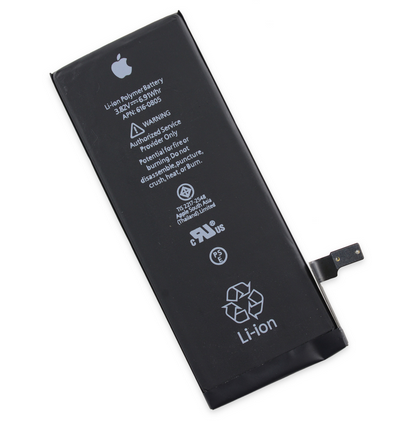Battery Navigation
Latest topics
Search
Battery Statics
Ads
Future of the Car Moves Forward with Alternative Energy
Page 1 of 1
 Future of the Car Moves Forward with Alternative Energy
Future of the Car Moves Forward with Alternative Energy
Electricity, gas, hydrogen, ethanol, solar energy, solid waste distillate fuel, water vapor? The list of alternative energy sources to oil is vast, as vast is the amount of millions of dollars invested in finding a solution, at least for now, seems still distant.
Nevertheless, the industry did not faint and maintains many of its strategies aimed at achieving the ideal fuel, coupled to support energy conservation and help improve the environmental health hit, no major alterations to maintain profitability in the sector.
Under this premise, several companies are managing their own progress and it is possible to envision three basic trends: the hybrid, powered by three main manufacturers (Europe, USA and Asia), electricity, dominated by European brands and the Far East, and the biocombustion, an alternative powered from Brazil and the United States.
The best of two worlds
Centered on a combination of electric and conventional gasoline, hybrid technology is the experts say shorter-term solution to the problem of energy saving. Hence, most automakers have focused their efforts in this direction, with the mass production of models based on this technique.
Based on the use of one or more electric motors coupled to a conventional internal combustion, hybrid technology has caught mainly in the developed country markets, where the high cost of models is offset by the long-term savings due to lower use of fossil fuels.
In fact, about 90% of cars launched in the last Frankfurt Motor Show, the largest in the Old Continent, were mobilized by vehicle or electric hybrid technology, marking a trend that seems to reverse in the foreseeable future.
More than lighting
Electricity is another alternative that is gaining adherents throughout the world. With zero emissions of harmful gases into the atmosphere, apparently electric cars are presented as the true green alternative for humanity, which has led many experts to ensure that hybrid vehicles are the first step towards the establishment of hegemony electrical .
Feasibility samples abound: from trucks and passenger transport to small city car use, through to supersport motorcycles and make up an ever-growing catalog, less extensive than is wanted by the high cost of these drives.
However, the high cost is not the only obstacle that must face the electric car. For environmentalists, while such vehicle is friendly to the planet, how to get the energy that moves is not so, especially in European and Asian countries, where much electricity is thermally or nuclear unhealthy forms of production to the atmosphere.
From Brazil to the world
This is where the Brazilian example comes up with. With production of over 2.7 million units per year, 100% of vehicles produced in that country include Flex engines, propellers capable of running 100% sugar cane alcohol, a fuel economic, ecological and whose primary production helps to absorb some of the carbon monoxide combustion emanating from the vehicle.
This is a technology that originated in the U.S. though, was hailed as state policy by Brazilians for over three decades and has helped the country to significantly reduce the emission of greenhouse gases, plus save 16% oil that was previously used for vehicular mobility.
Despite its advantages, there are few voices against this technology, which many experts could not exceed Brazil's borders to become a viable alternative in other parts of the world.
The fourth way
Away from all these options that involve high technology, Venezuela travels slower route by directing its strategy to natural gas, a resource that although abundant, is not exactly the most environmentally friendly.
Raised as a state policy, the goal of making half the fleet with CNG work looks little achievable under no progress of the plan to transform part of the national fleet to CNG, but a plus is that the local assembly been met and even exceeded the target of installing equipment on 30% of the cars they produce.
Moreover, the likelihood that the domestic industry follow in the footsteps of the big manufacturers look far, taking into account the sectoral policy only allows for the natural gas as an alternative.
"There is no strategy for the introduction of alternative energy and we do not see possibilities in the near future, especially because it depends on a state policy which is not provided," said a senior industry executive who declined to be identified.
This means that while other countries move towards the consolidation of an assembly industry worried about using alternative energy sources, Venezuela will continue traveling the old road of fossil fuels in its sector as an engine assembler.
BMW Concept 1 i8
Concept that encompasses the electrical from the German, the i8 is an extended-range hybrid tourism that can go 35 miles without emitting a single gram of CO2. Combined with the gasoline engine delivers up to 1.5 liter 260 horsepower and reach speeds of 250 km / h. Its futuristic style is based on a body of reinforced plastic and carbon fiber.
2 Nissan Leaf
Nissan has managed to beat the high cost and poor performance of conventional batteries to give life to the Leaf, a hatchback with a 107 hp engine AC by a lithium-ion battery that gives autonomy to travel 160 km with a single charge and exceed 145 km / h.
3 Audi R8 e-tron
The sportiest Audi electric cars includes four engines - two for each axis, which develops 313 horsepower, powered by a lithium ion rechargeable battery of 53 kw / h fully loaded 6 to 8 hours conventional outlet, and 2.5 hours in a high voltage making. The battery is also recharged by the energy provided by the braking of the vehicle itself, which offers a range of 250 kilometers.
4 Mercedes-Benz F 125! Concept
Luxury sedans whose structure is 100% degradable hydrogen compounds, is coated by a mixture of recycled plastic fiber, carbon fiber, aluminum and steel. F-Cell incorporates electric motor capable of delivering up to 313 horsepower. Emission-free, 125! can travel 1,000 kilometers without needing to recharge their batteries.
5 Fiat Uno
Equipped with dual motors gasoline-ethanol of 73 and 85 horses, the successful sub-compact Fiat art includes tires that reduce friction with the pavement, which results in fuel savings of between 3% and 5%. Special versions are expected to be mass-produced pieces incorporate recycled plastic and coir fabrics, among other things degradable.
2012 Ford Explorer 6
Equipped with an efficient 3.5-liter V6 engine, the new Explorer offers 290 horsepower and six-speed Select Shift and four types of traction. Includes stability control system to detect that disbonds automatically apply the brakes and reduces torque. This is done to slow up to 16 km / h in just one second.
7 Toyota Corolla 2012
The most successful car of the Japanese in the country was the first model produced in Venezuela to incorporate dual system to work with natural gas or gasoline. Equipped with 1.8-liter, four cylinder, 16 valves, the use of CNG does not prevent the car delivers its 132 horsepower and keep the usual benefits of gasoline cars in its class.
8 Honda FCX Clarity
The Honda hydrogen car has an electric motor of 136 horsepower powered by a fuel cell that uses hydrogen stored in liquid in a pressurized tank. Its maximum speed is 160 km / h and an autonomy of 460 kilometers. Most impressive is that charges the lithium battery three to four minutes.
9 Renault Zoe
Evolution of the Clio includes electric motor 60 kW power equivalent to 80 horses. This engine, which is powered by a rechargeable lithium-ion rechargeable over a period of 6 to 8 hours, Zoe allows a top speed of 135 kilometers per hour. It presents a range of 160 kilometers.
! 0 Chevrolet Volt
Spacious and elegant, this family a gasoline engine equipped with four-cylinder and 1.4 liter capacity associated with an electric motor of 151 kW which together provide 150 horsepower, enough to reach top speed of 160 kilometers per hour. Use an electric generator to charge your battery and make it work in electric mode as long as possible.
Nevertheless, the industry did not faint and maintains many of its strategies aimed at achieving the ideal fuel, coupled to support energy conservation and help improve the environmental health hit, no major alterations to maintain profitability in the sector.
Under this premise, several companies are managing their own progress and it is possible to envision three basic trends: the hybrid, powered by three main manufacturers (Europe, USA and Asia), electricity, dominated by European brands and the Far East, and the biocombustion, an alternative powered from Brazil and the United States.
The best of two worlds
Centered on a combination of electric and conventional gasoline, hybrid technology is the experts say shorter-term solution to the problem of energy saving. Hence, most automakers have focused their efforts in this direction, with the mass production of models based on this technique.
Based on the use of one or more electric motors coupled to a conventional internal combustion, hybrid technology has caught mainly in the developed country markets, where the high cost of models is offset by the long-term savings due to lower use of fossil fuels.
In fact, about 90% of cars launched in the last Frankfurt Motor Show, the largest in the Old Continent, were mobilized by vehicle or electric hybrid technology, marking a trend that seems to reverse in the foreseeable future.
More than lighting
Electricity is another alternative that is gaining adherents throughout the world. With zero emissions of harmful gases into the atmosphere, apparently electric cars are presented as the true green alternative for humanity, which has led many experts to ensure that hybrid vehicles are the first step towards the establishment of hegemony electrical .
Feasibility samples abound: from trucks and passenger transport to small city car use, through to supersport motorcycles and make up an ever-growing catalog, less extensive than is wanted by the high cost of these drives.
However, the high cost is not the only obstacle that must face the electric car. For environmentalists, while such vehicle is friendly to the planet, how to get the energy that moves is not so, especially in European and Asian countries, where much electricity is thermally or nuclear unhealthy forms of production to the atmosphere.
From Brazil to the world
This is where the Brazilian example comes up with. With production of over 2.7 million units per year, 100% of vehicles produced in that country include Flex engines, propellers capable of running 100% sugar cane alcohol, a fuel economic, ecological and whose primary production helps to absorb some of the carbon monoxide combustion emanating from the vehicle.
This is a technology that originated in the U.S. though, was hailed as state policy by Brazilians for over three decades and has helped the country to significantly reduce the emission of greenhouse gases, plus save 16% oil that was previously used for vehicular mobility.
Despite its advantages, there are few voices against this technology, which many experts could not exceed Brazil's borders to become a viable alternative in other parts of the world.
The fourth way
Away from all these options that involve high technology, Venezuela travels slower route by directing its strategy to natural gas, a resource that although abundant, is not exactly the most environmentally friendly.
Raised as a state policy, the goal of making half the fleet with CNG work looks little achievable under no progress of the plan to transform part of the national fleet to CNG, but a plus is that the local assembly been met and even exceeded the target of installing equipment on 30% of the cars they produce.
Moreover, the likelihood that the domestic industry follow in the footsteps of the big manufacturers look far, taking into account the sectoral policy only allows for the natural gas as an alternative.
"There is no strategy for the introduction of alternative energy and we do not see possibilities in the near future, especially because it depends on a state policy which is not provided," said a senior industry executive who declined to be identified.
This means that while other countries move towards the consolidation of an assembly industry worried about using alternative energy sources, Venezuela will continue traveling the old road of fossil fuels in its sector as an engine assembler.
BMW Concept 1 i8
Concept that encompasses the electrical from the German, the i8 is an extended-range hybrid tourism that can go 35 miles without emitting a single gram of CO2. Combined with the gasoline engine delivers up to 1.5 liter 260 horsepower and reach speeds of 250 km / h. Its futuristic style is based on a body of reinforced plastic and carbon fiber.
2 Nissan Leaf
Nissan has managed to beat the high cost and poor performance of conventional batteries to give life to the Leaf, a hatchback with a 107 hp engine AC by a lithium-ion battery that gives autonomy to travel 160 km with a single charge and exceed 145 km / h.
3 Audi R8 e-tron
The sportiest Audi electric cars includes four engines - two for each axis, which develops 313 horsepower, powered by a lithium ion rechargeable battery of 53 kw / h fully loaded 6 to 8 hours conventional outlet, and 2.5 hours in a high voltage making. The battery is also recharged by the energy provided by the braking of the vehicle itself, which offers a range of 250 kilometers.
4 Mercedes-Benz F 125! Concept
Luxury sedans whose structure is 100% degradable hydrogen compounds, is coated by a mixture of recycled plastic fiber, carbon fiber, aluminum and steel. F-Cell incorporates electric motor capable of delivering up to 313 horsepower. Emission-free, 125! can travel 1,000 kilometers without needing to recharge their batteries.
5 Fiat Uno
Equipped with dual motors gasoline-ethanol of 73 and 85 horses, the successful sub-compact Fiat art includes tires that reduce friction with the pavement, which results in fuel savings of between 3% and 5%. Special versions are expected to be mass-produced pieces incorporate recycled plastic and coir fabrics, among other things degradable.
2012 Ford Explorer 6
Equipped with an efficient 3.5-liter V6 engine, the new Explorer offers 290 horsepower and six-speed Select Shift and four types of traction. Includes stability control system to detect that disbonds automatically apply the brakes and reduces torque. This is done to slow up to 16 km / h in just one second.
7 Toyota Corolla 2012
The most successful car of the Japanese in the country was the first model produced in Venezuela to incorporate dual system to work with natural gas or gasoline. Equipped with 1.8-liter, four cylinder, 16 valves, the use of CNG does not prevent the car delivers its 132 horsepower and keep the usual benefits of gasoline cars in its class.
8 Honda FCX Clarity
The Honda hydrogen car has an electric motor of 136 horsepower powered by a fuel cell that uses hydrogen stored in liquid in a pressurized tank. Its maximum speed is 160 km / h and an autonomy of 460 kilometers. Most impressive is that charges the lithium battery three to four minutes.
9 Renault Zoe
Evolution of the Clio includes electric motor 60 kW power equivalent to 80 horses. This engine, which is powered by a rechargeable lithium-ion rechargeable over a period of 6 to 8 hours, Zoe allows a top speed of 135 kilometers per hour. It presents a range of 160 kilometers.
! 0 Chevrolet Volt
Spacious and elegant, this family a gasoline engine equipped with four-cylinder and 1.4 liter capacity associated with an electric motor of 151 kW which together provide 150 horsepower, enough to reach top speed of 160 kilometers per hour. Use an electric generator to charge your battery and make it work in electric mode as long as possible.
juda- Posts : 9
Points : 29
Reputation : 0
Join date : 2012-01-13
 Similar topics
Similar topics» How Interstate Is Shaping the Future of Rechargeable Batteries
» Toyota Developing Magnesium Batteries as Alternative to Lithium
» Next generation of EV batteries could be five years away: US energy chief
» Zhuhai Yintong Energy Co., Ltd. Accelerates Orders From Altair Nanotechnologies
» Sony introduced ESSP-2000 for business energy storage
» Toyota Developing Magnesium Batteries as Alternative to Lithium
» Next generation of EV batteries could be five years away: US energy chief
» Zhuhai Yintong Energy Co., Ltd. Accelerates Orders From Altair Nanotechnologies
» Sony introduced ESSP-2000 for business energy storage
Page 1 of 1
Permissions in this forum:
You cannot reply to topics in this forum













» NIO Phone 2 Smartphone Battery NBET02
» Mercedes Becker Map Pilot Battery HJS100
» Braun Silk-épil 9 Flex Type 5380 Epilator Battery
» Samsung Galaxy Tab Active Tablet PC Battery EB-BT365BBU
» Samsung Galaxy Tab Active 3 SM-T570 Tablet PC Battery EB-BT575BBE